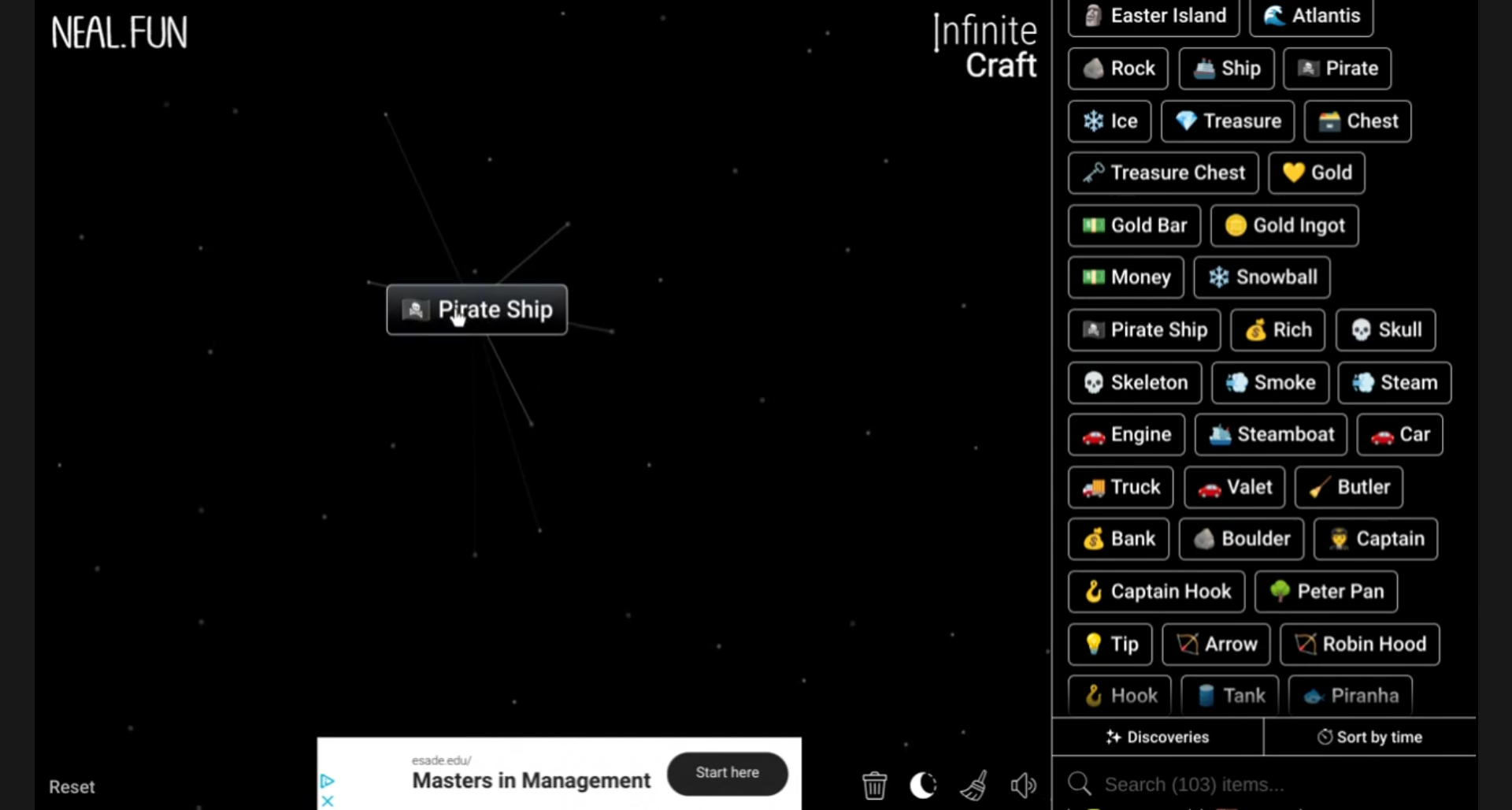In the vibrant world of Infinite Craft, players engage in multi-faceted activities that range from crafting and building to exploring and combatting threats. Amid these adventures, establishing a well-functioning police force becomes essential to maintain order, enhance gameplay, and foster a safe environment for all. This guide will explore how to make police in Infinite Craft by detailing everything from preparation and resource gathering to implementation and community engagement.
Understanding Infinite Craft
What is Infinite Craft?
Infinite Craft is a creative sandbox game that allows players to build, explore, craft, and fight against various challenges in a customizable environment. The game’s mechanics provide immense freedom, enabling diverse gameplay styles—from solo adventures to cooperative challenges with friends. Players can construct anything from majestic castles to intricate machines, unleashing their creativity as they interact with a rich world.
Role of Law Enforcement in Infinite Craft
The police force in Infinite Craft serves multiple critical functions. Primarily, police maintain order among the player community by enforcing rules, managing conflicts, and fostering cooperation. Their presence significantly impacts player interactions, creating an environment where players feel secure, encouraged to collaborate, and motivated to uphold in-game regulations.
Preparing to Create Police
Gathering Resources
Before diving into constructing your police station, it’s crucial to gather essential materials. Here are the key resources you’ll need:
– **Building Materials**: Wood, stone, and metal are fundamental components for constructing a police station. Consider using these materials to create a robust infrastructure.
– **Crafting Supplies**: Items for crafting armor and weapons are vital for equipping officers. Look for materials like iron and leather to create functional gear.
– **Tools**: Ensure you have the necessary tools for construction, such as axes, pickaxes, and shovels, to facilitate the building process.
Choosing the Right Location
Selecting an optimal location for your police station is crucial. Consider the following factors when placing your station:
– **Proximity to High-Traffic Areas**: Choose a location near popular hotspots where players frequently gather, such as markets, ports, or community centers. This visibility can deter wrongdoing and promote better community relations.
– **Accessibility to Resources**: Ensure the location is near critical resources for both police operations and community activities.
Ideally, consider locations like the center of a bustling village or near major transportation routes.
Designing Your Police Station
Architectural Styles
When designing your police station, you have several architectural styles to consider:
– **Modern vs. Traditional Structures**: Decide whether you want a sleek, modern building or a rustic, traditional police station. Each style should reflect the overall aesthetic of your community.
– **Utilizing Local Textures and Materials**: Incorporate materials abundant in your area to create a cohesive look that blends with the surroundings.
Key Features of Your Police Station
A well-planned police station will include various essential areas:
– **Reception Area**: An inviting space where players can report incidents or seek help.
– **Holding Cells**: A secure area for detaining problematic players temporarily.
– **Evidence Storage**: A place to keep collected evidence from investigations.
– **Officer Quarters**: Private spaces for officers to rest out of view.
Make sure to maximize space and functionality by smartly organizing rooms and incorporating clever storage solutions.
Staffing Your Police Force
Roles and Responsibilities
Every police force needs a well-defined structure. Here are common roles found in a police department:
– **Chief**: The leader responsible for overseeing all operations and making strategic decisions.
– **Patrol Officers**: Officers who regularly patrol their assigned zones, responding to incidents as they arise.
– **Detectives**: Specialized officers who investigate more serious crimes and gather evidence.
Assign tasks according to players’ strengths, ensuring everyone contributes effectively to maintaining order.
Training Your Officers
Training is essential for your police force to operate efficiently. Implement these best practices:
– **Community Policing Strategies**: Focus on building relationships within the player community, using informal methods to encourage cooperation.
– **Role-Play Scenarios**: Organize events and exercises that simulate real-life policing situations, helping players become more comfortable with their roles.
Training fosters confidence and enhances cooperative skills.
Equipping Your Police Force
Uniforms and Gear
Uniforms help establish identification and authority for police officers. Here are some crafting options:
– **Police Uniforms**: Use crafting recipes to create various clothing styles that signify rank and role.
– **Armor**: Consider crafting optional light armor for added protection during patrols and engagements.
Outfitting your officers effectively promotes their readiness for challenges.
Vehicles and Technology
Equipping your police department with the right vehicles and technology is essential:
– **Types of Vehicles**: Offer options like cars, bikes, and horses for transportation during patrols and emergencies.
– **Recommended Tools**: Equip officers with communication devices like in-game radios or involve external platforms for real-time updates.
Proper transportation ensures swift responses to incidents.
Implementing Law Enforcement in the Game
Establishing Rules and Regulations
Creating a set of guidelines for the community to follow is crucial. Here’s how to implement effective laws:
– **Key Laws**: Outline essential rules that players should adhere to, promoting a positive and safe community experience.
– **Enforcement Methods**: Develop a system for reporting violations and overseeing rule enforcement. This could include a complaint box or a reporting channel within the game.
Clear regulations make it easier for players to understand community standards.
Engaging the Community
A critical aspect of implementing the police force involves engaging with the community:
– **Hosting Events**: Organize community safety events or patrols to introduce your police force effectively.
– **Building Positive Relationships**: Use outreach strategies, emphasizing the benefits of a police presence in the game.
Encouraging community interaction establishes trust and cooperation.
Maintaining a Police Force
Regular Patrols and Community Engagement
Consistency is key to maintaining an effective police force. Here are actionable steps:
– **Importance of Visibility**: Regular patrols will remind players of the police presence, discouraging negative behavior.
– **Community Outreach Programs**: Establish programs that promote community engagement, such as safety workshops or neighborhood watch initiatives.
Visibility fosters trust and enhances security.
Addressing Issues and Conflict Resolution
Handling disputes efficiently is vital. Here are some tactics:
– **In-Game Conflict Resolution**: Train officers to mediate disputes between players, focusing on communication and fairness.
– **Reporting Procedures**: Create procedures that allow players to report issues smoothly, ensuring transparency and accountability in handling conflicts.
Effective conflict resolution strengthens community bonds.
Summary Table of Key Points
| Aspect | Key Points |
|---|---|
| Resource Gathering | Gather wood, stone, metal; craft armor and tools. |
| Location | High-traffic areas; near resources. |
| Design | Architectural style; essential features. |
| Staffing | Define roles; train officers. |
| Equipment | Uniforms; vehicles; communication tools. |
| Community Engagement | Establish rules; host events. |
| Maintenance | Regular patrols; conflict resolution protocols. |
Frequently Asked Questions

1. How do I start the police force in Infinite Craft?
Start by gathering essential resources, choosing a suitable location, and designing your police station.

2. What materials are necessary for a police station?
You will need wood, stone, metal, and crafting supplies for armor and tools.
3. What roles exist within a police department?
Common roles include Chief, patrol officers, and detectives, each with distinct responsibilities.

4. How can I train my police officers?
Implement community policing strategies and role-play scenarios to train your officers effectively.
5. Why is visibility important for police officers?
Regular patrols maintain a visible authority presence, deterring misconduct and fostering community trust.
6. How can I engage the community as a police force?
Host events, organize community outreach programs, and encourage player interaction.
7. What type of equipment is needed for police officers?
Equip your officers with uniforms, light armor, vehicles for transportation, and communication tools.
8. How can we resolve conflicts in the game?
Train officers in conflict resolution techniques and establish clear reporting procedures for disputes.
9. What are some best practices for community policing?
Focus on building relationships within the player base and encourage cooperation through open communication.
10. How can I gather feedback about the police force?
Create a system for players to share their experiences or concerns regarding police activities in the game, promoting transparency and accountability.
By following this detailed guide on how to make police in Infinite Craft, you can establish an efficient and well-respected police force that enhances your gaming experience and fosters a safe community atmosphere. Share your experiences and tips with fellow players to further enrich the world of Infinite Craft!